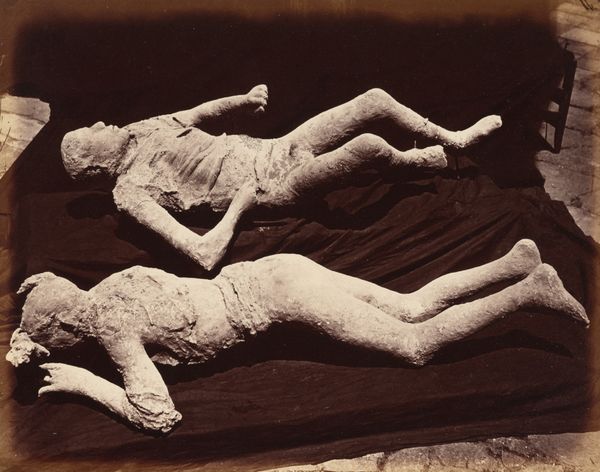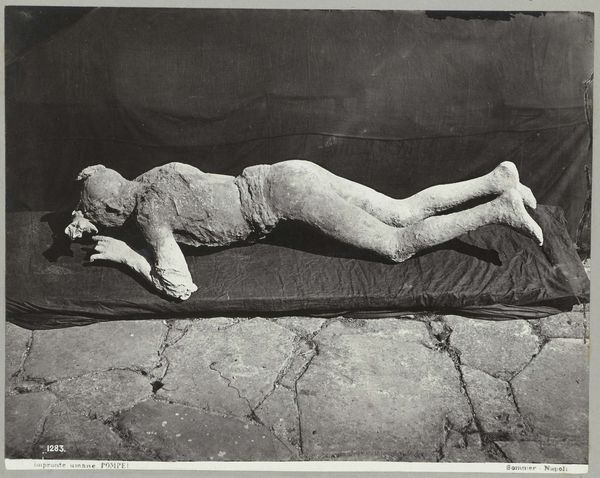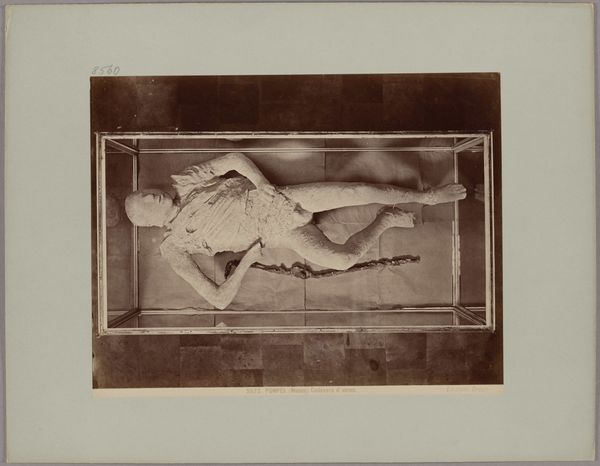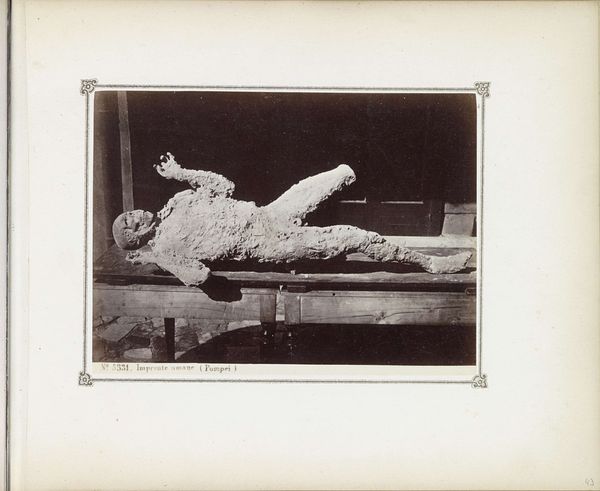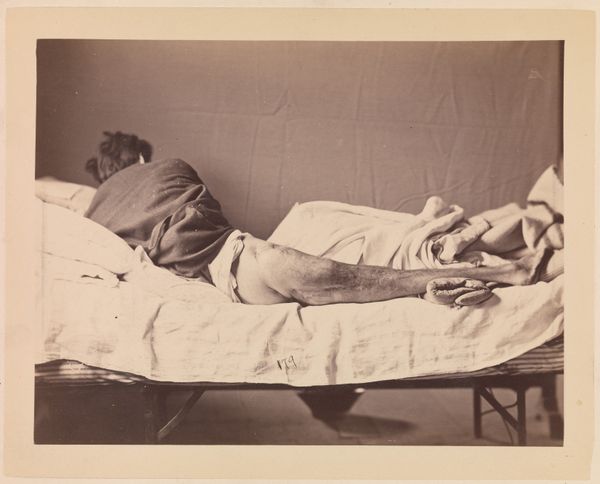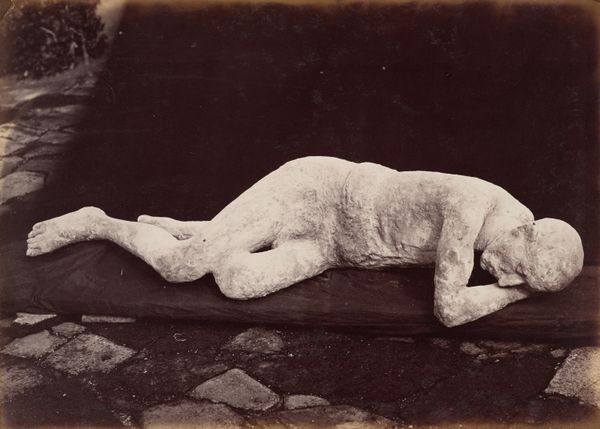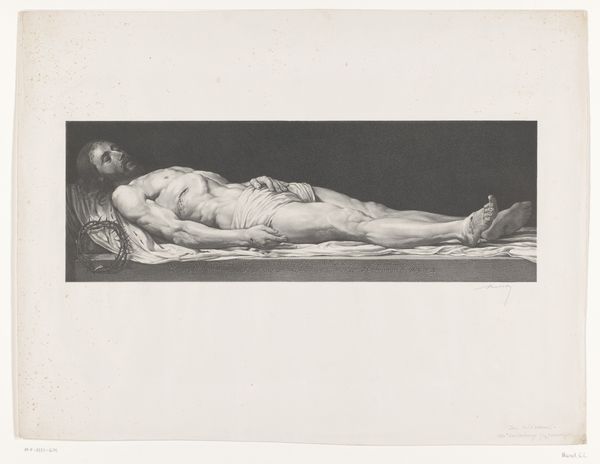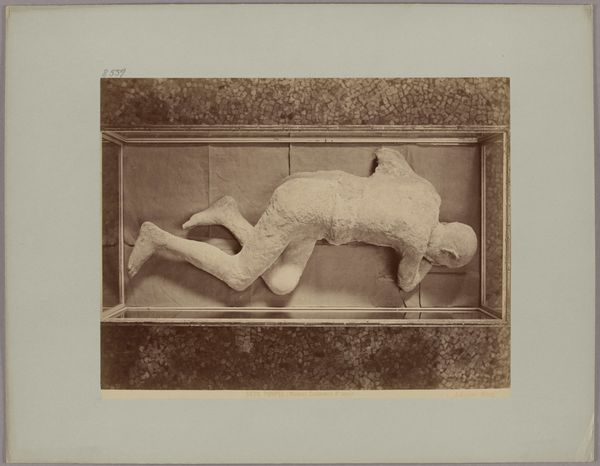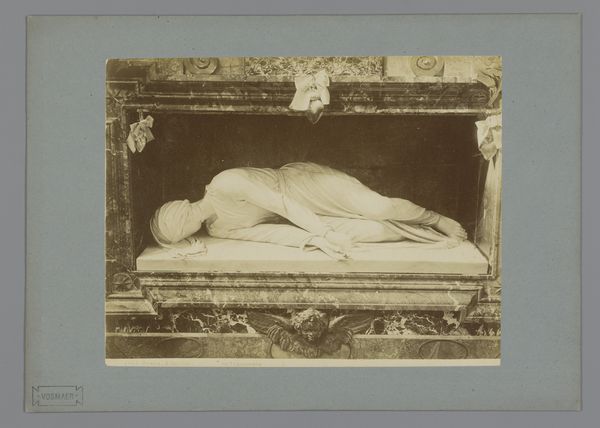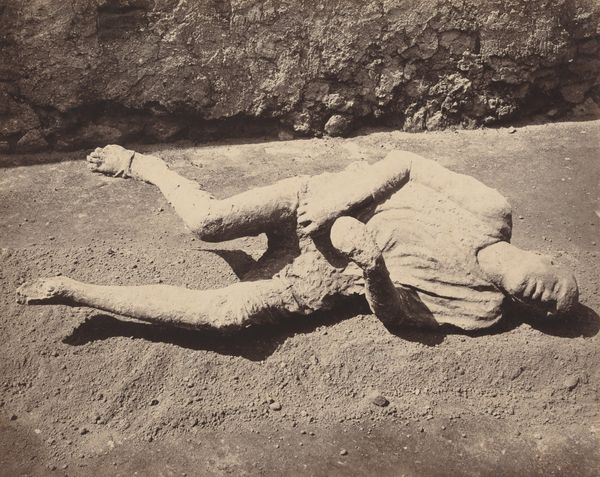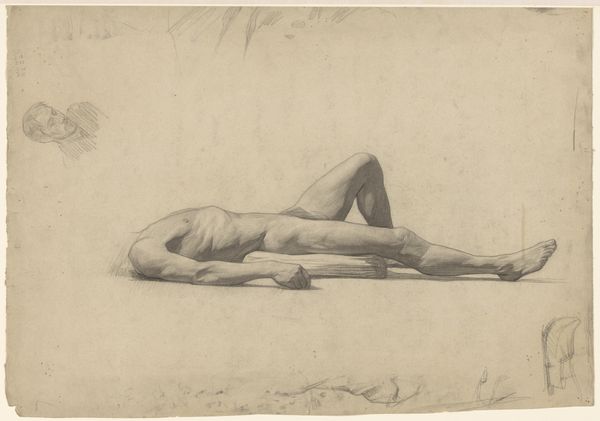![[Plaster Casts of Bodies, Pompeii] by Giorgio Sommer](/_next/image?url=https%3A%2F%2Fd2w8kbdekdi1gv.cloudfront.net%2FeyJidWNrZXQiOiAiYXJ0ZXJhLWltYWdlcy1idWNrZXQiLCAia2V5IjogImFydHdvcmtzLzVkYTVjODBjLTI5YmEtNGIyOS05NTc5LTY3ODE4YTlkYTdmOC81ZGE1YzgwYy0yOWJhLTRiMjktOTU3OS02NzgxOGE5ZGE3ZjhfZnVsbC5qcGciLCAiZWRpdHMiOiB7InJlc2l6ZSI6IHsid2lkdGgiOiAxOTIwLCAiaGVpZ2h0IjogMTkyMCwgImZpdCI6ICJpbnNpZGUifX19&w=3840&q=75)
photography, sculpture, gelatin-silver-print
#
portrait
#
sculpture
#
figuration
#
photography
#
romanesque
#
ancient-mediterranean
#
sculpture
#
gelatin-silver-print
#
history-painting
Dimensions: Image: 27.3 x 38.4 cm (10 3/4 x 15 1/8 in.) Sheet: 27.8 x 38.4 cm (10 15/16 x 15 1/8 in.) Mount: 47.8 x 55.8 cm (18 13/16 x 21 15/16 in.)
Copyright: Public Domain
Curator: Giorgio Sommer's gelatin-silver print, "[Plaster Casts of Bodies, Pompeii]", created sometime between 1870 and 1880, captures two plaster figures. My first impression is one of stark stillness and melancholy. The sepia tones amplify this mood. Editor: The photograph, indeed, has an arresting quality. The stark monochrome palette undeniably heightens the contrast, emphasizing the figures' inertness. Let's unpack the formal choices, the tonal range shifting between light and dark, creating an interesting tension on the surface that contributes to the sense of weightiness. Curator: Precisely! This visual tension seems inseparable from its historical context. Discovered during excavations after Vesuvius’s eruption, the casts give shape to trauma. But even without this information, note how the composition directs the eye: the draping fabric contrasts with the static forms. Editor: Absolutely, the drape under the sculptures offers a visual echo of their frozen state, a material reflection on mortality. More significantly, Sommer chose to focus not on the disaster, but rather on its human cost—a clear attempt to prompt empathy. The historical impact is deeply troubling in terms of trauma, and class relations. Curator: It becomes an interesting study, and even exploitation, to translate horror and chaos into aesthetics using lighting and staging. It has become its own macabre, quiet art form removed from the agonizing events, creating aesthetic intrigue in its composition through lines, and angles. Editor: This leads to a potent observation of the exploitative element inherent in documenting tragedy. Sommer's image becomes an inquiry of history through an artistic lens. A tangible symbol, frozen in time to incite an introspective consideration on survival, trauma and cultural legacy of loss. Curator: Thank you. Considering the social and emotional dimensions helps one realize a deeper impact beyond what’s readily available at face value, in any medium or surface, from tone, material, or texture. Editor: Agreed.
Comments
No comments
Be the first to comment and join the conversation on the ultimate creative platform.
